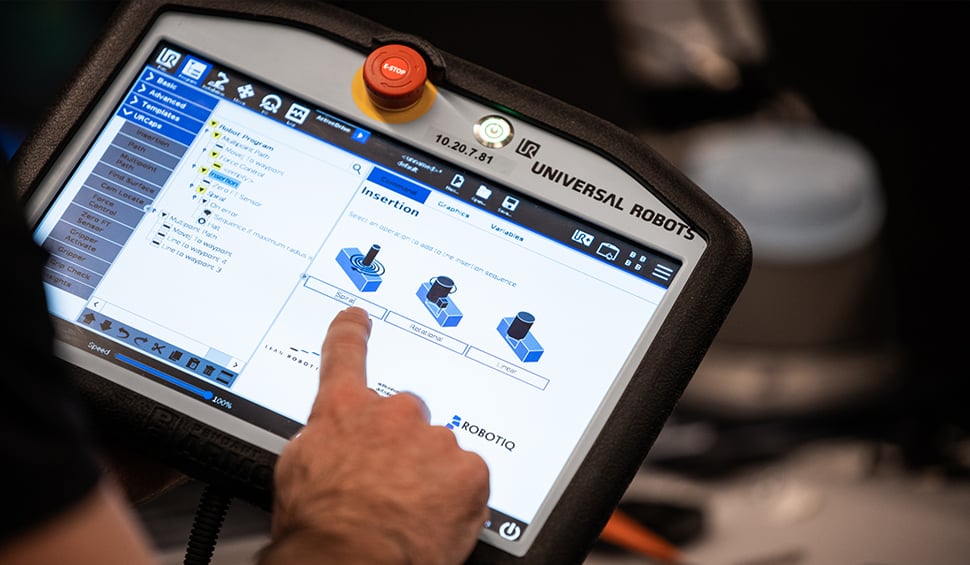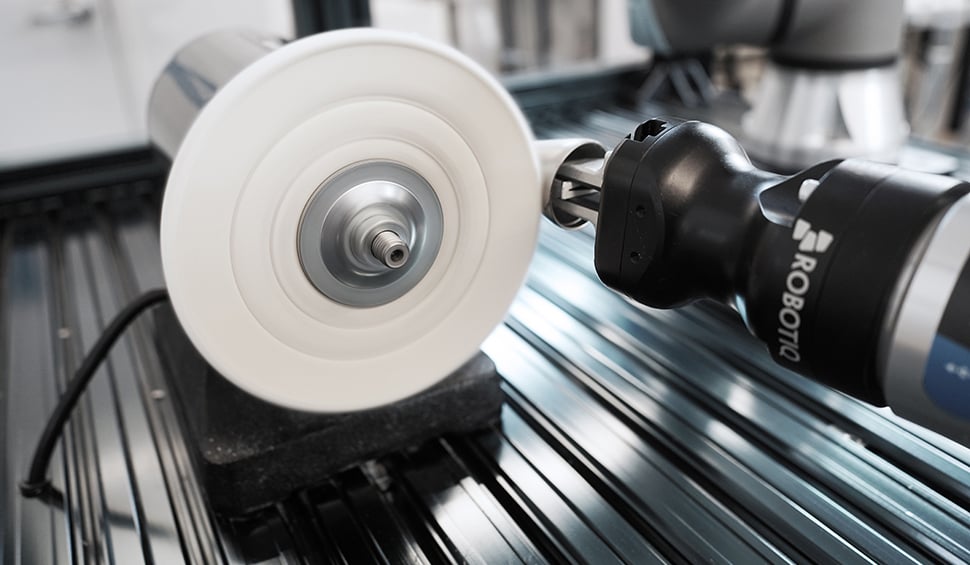Tactile Sensor and Force Torque Sensor: What's the Difference?

Posted on Sep 16, 2014 in Robot Sensors
3 min read time
We have previously published a couple articles on the different applications of Force-Torque Sensors and we have also written about Tactile Sensors a couple of weeks ago. Both devices are designed to detect force, so what is the difference? Which device should I use for my application?
Force Torque Sensor
A FT Sensor is a device that is placed between the robot flange (wrist) and the robot tool (end-effector). This device is able to detect force that is applied on the robot tool. For example, if force is applied on the robot itself (before the sensor), the sensor doesn't feel it. If the force is applied on the robot tool (after the sensor), then the force is felt by the sensor.
Many robotic applications presently incorporate such devices. One of the most common uses for some FT Sensors are for hand-guiding purposes. This means you can control the robot using your hand to guide it. Since the force is applied on the robot tool, the controller can analyze the directions you want to go and make you feel that the robot moves freely. Most of the collaborative robots have built-in FT sensors so you can program them by demonstration without adding any device to the robot.
Force detection has been used in assembly tasks. The classic example would be to insert a long part in a certain hole. Keeping in mind that the robot cannot feel what it is doing, so if it was programmed to enter the pin/shaft in the hole, it will do it whether or not it meets resistance. Using a FT sensor, the robot can feel when there is a certain resistance. By knowing that, the program can re-adjust the position or the angle of the part and find a better way to enter it into the hole. This is often crucial as it avoids damage to the parts and machinery, as well as reducing scrap, thus increasing production quality and quantity.
Finally others applications require a limited force most notably being applied by the robotic tool. The most typical application of this type are finishing applications (deburring, polishing, etc).
Tactile Sensor
 Tactile sensors are used for object detection. For instance, we can use these sensors to help acquire object detection from inside a gripper. This kind of application allows the user to control the force that can be applied on the object. In other words, the grasping force is controlled by a feedback loop and allows a mechanical gripper to grasp very thin and fragile object without breaking them.
Tactile sensors are used for object detection. For instance, we can use these sensors to help acquire object detection from inside a gripper. This kind of application allows the user to control the force that can be applied on the object. In other words, the grasping force is controlled by a feedback loop and allows a mechanical gripper to grasp very thin and fragile object without breaking them.
Another application that is relatively new is to cover a robot with tactile sensors to prevent collisions or reduce their impact. In fact, if the feedback loop is fast enough, at the very moment the tactile sensors feels an unaccounted for object in its trajectories, it can stop and avoid a serious collision with a co-worker.
Even if both devices detect the same physical parameter (force), this is not a reason to think that they are the same. Their visual and functional aspects are very different. Usually, the FT sensor will be used to close the robot movement force control loop, while a tactile sensor is typically used to close the gripper finger force control loop.
The link below shows a Force-Torque Sensor used in a hand-guiding applications in a workshop to teach a welding path to a robot welder.






Leave a comment